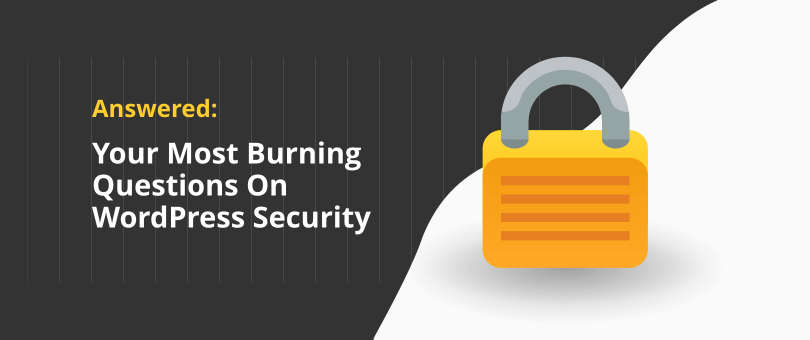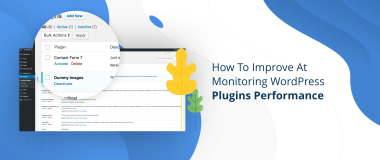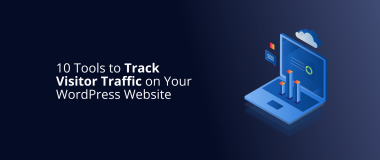WordPress is a powerful open-source CMS that powers and energizes the presence of millions of websites, web apps, and of course, blogs. Currently, more than 33% of the top 10 million websites on the Internet are powered by WordPress, and its usability, energetic and experienced community, as well as the scalability, make WordPress a popular and safe choice for business websites.
However, because its popularity in the corporate world, WordPress has become one of the major targets for cyber attacks from hackers. For example, hackers build bots and software that scan websites for vulnerabilities and if your WordPress version has a gap in its security, they’ll probably find that gap and utilize it.
This leads to security questions about why and how the attacks occur, and how companies can protect their investment.
That is why we’ve decided to answer the most vital WordPress security questions about the best CMS for your website.
How Secure Is WordPress?

In a nutshell, WordPress is secure if you keep it that way!
The good news is that WordPress is safe and has regular core updates. Since the 3.7 version, WordPress introduced automated background updates for all minor releases, such as 3.7.1 and 3.7.2. The WordPress Security Team identifies, fixes, and pushes out the automated security improvements for WordPress without the site owner needing to do anything on their end, and the security update will install automatically.
When the security team pushes an update for the current stable release of WordPress, the core team will also push security updates for all the releases that are eligible for background updates (from WordPress 3.7 and on), so that the older but relevant versions of WordPress receive security amplifications as well.
As a site owner, you can also choose to remove automatic background updates through a simple change in their configuration file. However. keeping the automatic updates is highly recommended by the core team, as well as running the latest version of WordPress.
How Can I Secure My WordPress Website?
There are lots of simple tricks that can make your WordPress site safer, plus additional ones that require some technical expertise. Implementing the following tips will ensure that you’ll hackerproof your website:
Pick the Right Hosting Provider
Every hosting company is not the same in terms of quality, customization, and pricing packages, as well. While affordable solutions are tempting, it is advisable to check what exactly you get for the price, as well as reviews from previous clients.
Having a premium and robust hosting solution at your disposal allows you extra security, 24/7 expert support, malware scanning, and more. On the question of high-end hosting solutions, there’s no better answer than Pagely.
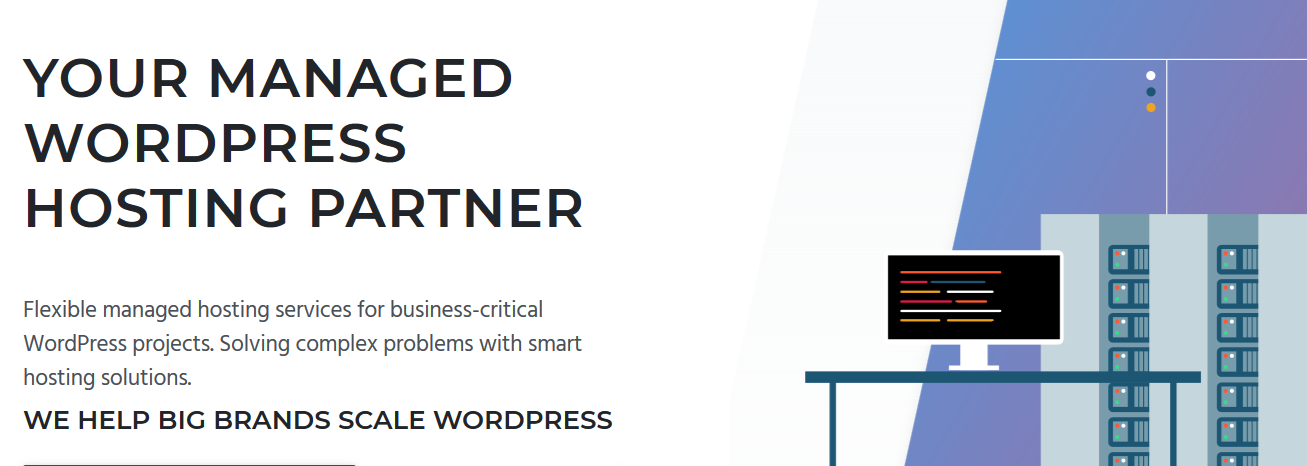
For starters, they use a dynamic web application firewall (WAF), which decreases the risk of a DDoS or brute force attacks.
Pagely also systematically scans for hazards like trojan horses, viruses, worms, keyloggers, spyware, and adware. Additionally, they eliminate the nefarious traffic well ahead before getting to your site.
Protect Your Login Page
The login page is the most targeted WordPress page by hackers. If they crack the login page, they’ll have access to everything else backend and frontend.
One of the best ways to protect the login page from brute-force attacks is to use 2-factor authentication. When you log into WP, besides the regular password, you can allow for a time-based token that needs to be entered by the user. Because this token expires in a minute, even if a hacker or someone that knows your password will not be able to completely log in without entering the required token. For this purpose, you can use the Google Authenticator plugin.

Stop Using Nulled Themes and Plugins
“Nulled” is every premium theme or plugin which doesn’t own authorship and protection credentials. When you use them on your WordPress website, the original publishers are not aware that you’ve installed them on your site, which means that they won’t be responsible if something bad happens to your website as a result.
Here’s the thing – You don’t know who or why has nulled the plugin/theme. Even without a bad intention, someone’s lack of experience can cause you errors, which will make your site vulnerable.
Depending on your data and the type of website, the damage can get substantial. When you realize that your theme/plugin is without the necessary security updates and 24/7 support, hackers will already utilize the gaps in your site.
To get a better grasp of why these themes and plugins are dangerous and the steps you need to take to avoid them, read our guide here.
Use a Security Plugin
A robust plugin will preserve your WordPress website from every type of threat, SQL injection, malware, spam, and so on. The high-end WordPress security plugins comprise functions such as monitoring, two-factor authentication, blacklisting, and more:
Use a Strong Admin Password
Even a 2-factor authentication won’t save you if you have weak admin passwords. Hackers get it – most of the people don’t use passwords that are complex because they want to memorize them. Having a password such as the famous “0123456789” means that your WordPress page is already doomed.
Using plugins like AskApache Password Protect helps you protect your passwords by automatically generating a .htpasswd file, which encrypts your password, and protects the security file permissions.
Nowhere Without SSL Certificate
An SSL certificate is obligatory if your website administers personal data such as passwords or credit cards. It encrypts the data long before it is transferred, which results in hackers not being able to capture it.
If you don’t have an SSL certificate, you can’t administer your WordPress website under the https protocol.
Updates
Security is one of the main reasons why you should update your WordPress site regularly. Updates often include security improvements that don’t allow your website to be exploited.
Because WordPress is open-source, its vast community of developers and security wizards who regularly test every version and handle security fixes. Not updating to the latest WordPress version can make your site vulnerable to malicious code scatterers and hackers.
How Can I Tell If My Plugins and Themes Are Secure?
Of course, building your WordPress site on a quality, fully authorized, and secure theme does the job of securing and maintaining much easier. A fully secure WordPress theme won’t allow any vulnerabilities, is updated regularly, and it is tested and compatible with each WordPress version.
One of the best ways to check for any vulnerabilities is using https://wpvulndb.com/ – probably the most popular vulnerability list for WordPress at the moment that contains all the latest vulnerabilities in plugins and themes.

Here, you can find information about the vulnerabilities and whether or not they have been fixed on certain WordPress versions.
You can even subscribe to their newsletter when new vulnerabilities get published. Of course, this does not crawl information for every single possible plugin and theme out there, but it does have most of the popular plugins and themes.
Additionally, if you don’t want to opt for your own custom theme that is developed by experts, you can always turn to the well-proven themes from the WordPress Theme Directory.

The themes in the directory are free, and they pass some rigorous security tests before they’re published there.
If you’ve purchased the theme from somewhere else, to check if there’s something wrong with it, you can use the Theme Check plugin.

Plugins, on the other hand, can be coded by unskilled developers, or by hackers pretending to be honest web developers. The most common plugin warning signs are:
- Bad reputation: For example, someone might not be a developer but purchased the plugin to pretend as an author and insert malicious code in websites. Google the plugin, and google the authors as well.
- Questionable code: If you’re skillful enough, you need to check the structure of the code and make sure that everything is like it’s supposed to be. If something looks dubious, leave the plugin and find an alternative.
- Not many downloads: A big number of installs and good ratings can mean that the plugin is actually good. However, if a plugin doesn’t have at least a thousand downloads, and it’s not been updated for at least 6 months, it’s better to stay away from it.
- No Documentation: The least that someone can do is provide screenshots or FAQs. If that’s not available, don’t download the plugin.
How Can I Audit My WordPress Security?

Conducting a WordPress security check-up of your WordPress website can help you prevent successful attacks on your site. You can’t fully protect your website simply because hackers always find new ways to attack, but you can ensure that you’re prepared for any recurrent threats by examining your WordPress security:
- Admin users: Are you using the “admin” username? If that’s so, please don’t. If someone tries to brute-force attack your site, using “admin” just makes his/her work easier.
- Strong password: The better the password, the much harder it is to guess. Make sure that you have a complex and strong password, and don’t forget to use 2-factor authentication.
- Up to date: When auditing, check that everything on your WordPress site has been updated. This includes the core, themes, and plugins as well.
- Backups: No matter how protected you are, stuff happens, and before you know it your WordPress site could be hacked, even worse, crashed. This is why it’s important to make backups as one of your security measurements.
What Are the Most Common WordPress Vulnerabilities?
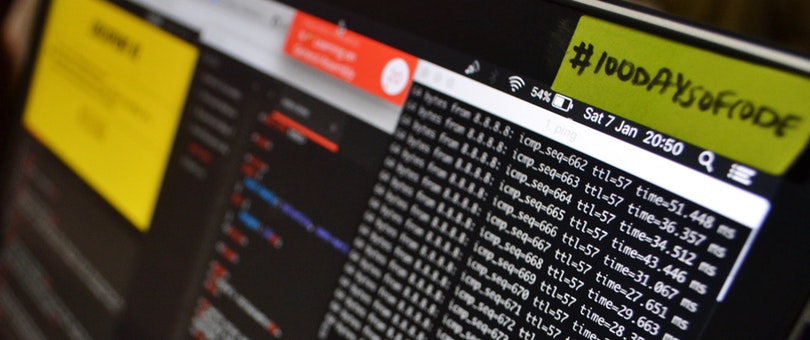
Being an open-source CMS, anyone component enough can contribute to the core. However, this openness can easily create loopholes for hackers to exploit, such as:
Brute Force Attacks: This involves multiple login attempts by hackers. Today, it is being done with powerful bots and algorithms that don’t repeat the same combination, and easier passwords can be cracked within minutes. The best way to avoid your password from being cracked is to use a strong password with upper case, lower case, numbers, and special characters.
SQL Injections: This is one of the oldest tricks in the hackers book. An SQL injection has the power to completely destroy your database. In most cases, SQLi grants control over the database. If used maliciously, this can lead to a data leak of personal information – passwords (very big NO!), addresses, billing information and anything personal you can think of.
To check if your WordPress website is infected with an SQL injection, you can use the WP Scan or Sucuri SiteCheck, as well as regularly updating your theme and plugins.
Malware: If your theme is infected or your plugins are outdated, your WordPress website may become a victim of malicious code. If this issue is not resolved in time, it can wreak havoc on your site. In most cases, malware comes to your website through infected plugins and nulled themes.
Plugins such as Sucuri or WordFence can successfully combat against malware, and if the problem is serious, an expert can help you sort it out.
DDoS Attacks: Distributed Denial of Service (DDoS) is the upgraded Denial of Service (DoS) where a huge volume of requests are made to a web server. As а result, this slows down the server, but not necessarily crashing it, that is if there is some form of mitigation or if the DDoS attack is not powerful enough.
How to Scan for Vulnerabilities?
Scanning your WordPress website for vulnerabilities is always a smart move. The best way to perform this is through plugins and online scan tools, such as:
How Often Should We Backup?

One of the crucial tasks that improve the security of your WordPress site is regular backups. You wouldn’t want to lose your content if something happened to your site. This is why you must be able to bring back everything as it was.
When you think about backup frequency, there are three major factors that need to influence your decision:
- Content Modifications: If you run a blog, you probably publish new content constantly, as well as update your current content. The content frequency is a crucial factor that in turn can determine the frequency of backups. Thanks to revisions, WordPress can handle this automatically in most cases.
- User Engagement: When visitors post a comment, order a product, or fill out forms, these interactions are recorded in the database, and databases are critical for the website to run easily. If the interactions are frequent, a real-time backup is your best choice.
- Updates Frequency: Every update to the WordPress core, themes, and plugins requires a prompt backup. A hosting company like Pagely already does this automatically for you, along with the automatic updates of everything on your WordPress website.
In a nutshell, you need to backup your website according to how often you make changes to it.
How Can I Know If My WordPress Website Is Hacked?

There are some common symptoms that can help you figure out if your WordPress website is hacked or weakened:
- Unexpected Traffic Drop: Everything goes well and you’ve scaled your WordPress website, but somehow, all of the sudden, the traffic drops. This might be a sign of a cyber attack.
- Ruined Homepage: This sign that your website has been taken over by hackers. They use your homepage to announce that they succeeded with their attack.
- You Can’t Log in: If you can’t log in, it means that someone already took over and deleted you as a user. In this case, because your account has been deleted, you can’t restore your access.
- Dubious Accounts: If you don’t protect your registration process, anyone can register, and before you realize it, you’ll be hacked by a suspicious account.
- Suspicious Scripts and Files: Most often, these files are disguised like WordPress files so they can blend in perfectly. Deleting these files will not guarantee that they won’t return. You will need to examine the security of your website, especially the file and directory structure.
- Slow Website: When hackers send too many requests to your server these activities can make your website slow and unresponsive, and they can even crash it to make it unavailable to the users.
- Strange Server Logs: Server log is a plain text that is saved on the web server. These files can help you comprehend what’s going on when your WordPress site has been attacked. They also contain the IP addresses that were used to access your website which allows you to block suspicious IP addresses.
How Will You Protect My WordPress Website?
Your web presence requires serious observation and maintenance work 24/7, both online and offline. By maintaining and securing your WordPress project, the technical stack is supported and new strategies can be implemented to help you reach your business goals while increasing profits and web traffic in the process.
Apart from the plugins and tactics that are mentioned above, each component of your WordPress project is maintained and observed, including a detailed examination of plugins that are, of course, if not maintained, can become one of the main doorways for hackers.
The plugin audit process at DevriX is automated with plugins such as P3 Performance Profiler and tools such as Google PageSpeed Insights.

This P3 plugin works by creating a profile of your WordPress site’s plugins’ performance by measuring their impact on your site’s security. With the P3 plugin, anything that is causing problems on your site can be narrowed down.
There’s also a plugin called Query Monitor, which is used to debug database queries, PHP errors, hooks and actions, block editor blocks, enqueued scripts and stylesheets, HTTP API calls, and more.
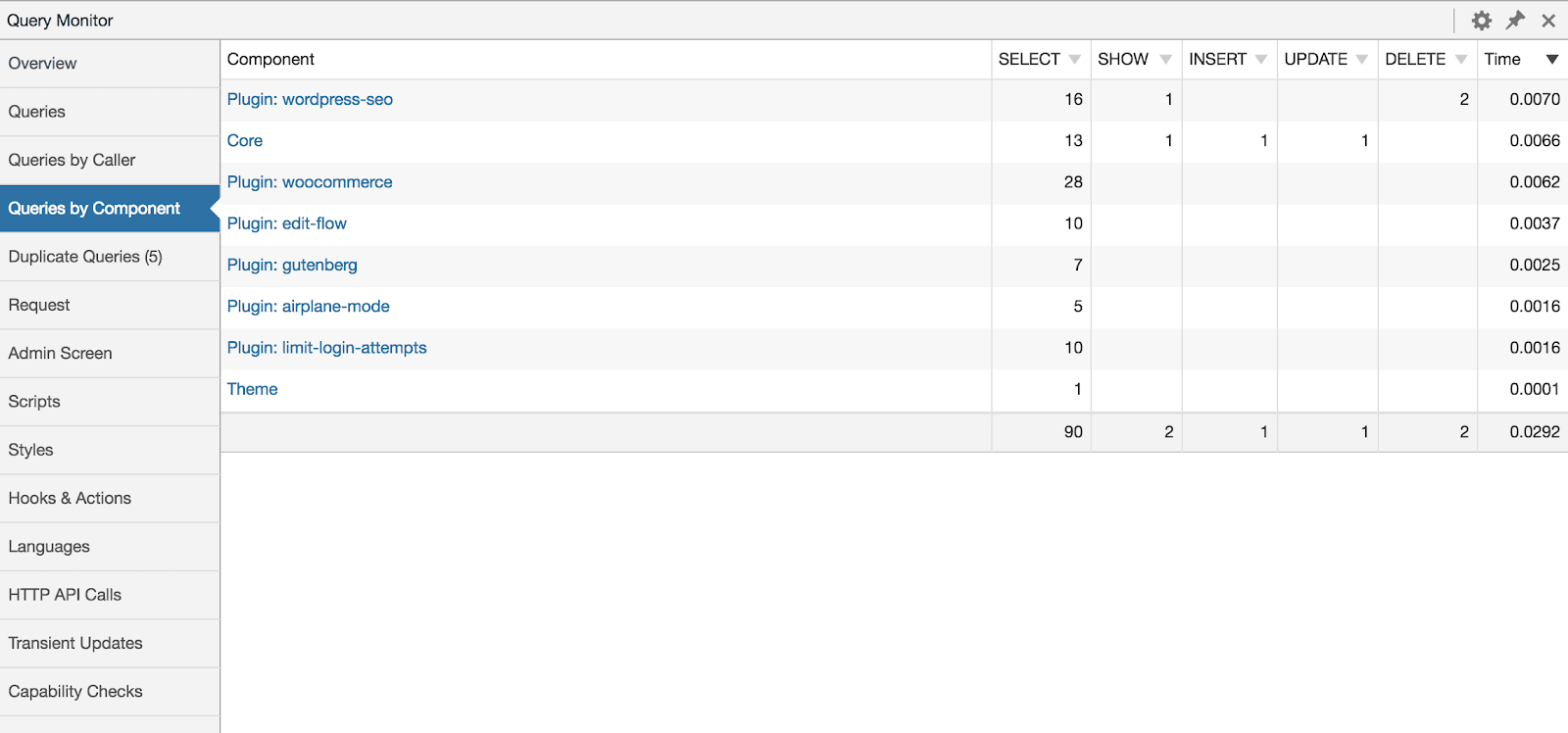
Of course, a proper security and maintenance plan can’t rely only on plugins, after all, diving deep down into the issues and resolving them can’t be achieved without technical competence. The additional analysis involves Server log analysis, JavaScript user monitoring, automation, staging server setup, optimization, scalability, continuous and chained deployments and more.
Warning signs and problems are detected by extracting potentially problematic components into separate pages and areas for isolated testing. At the final stages of resolving the security problems, your code is refactored and rebuilt for maximum security and performance!
As mentioned earlier, there are plugins that can help you monitor and resolve issues. But, to make sure that everything is on point with your WordPress plugins, your entire site compatibility and stay safe in the process, you must invest in a serious maintenance plan that works!
